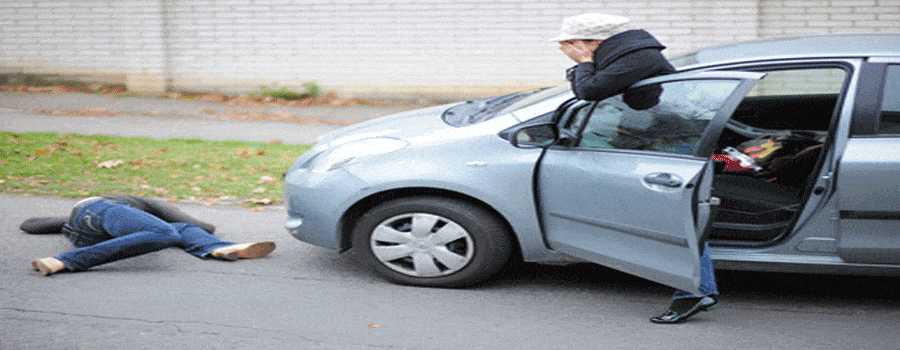Every year thousands of pedestrians are seriously
injured or killed in road traffic accidents in the UK.
Anybody on the road is vulnerable, but clearly pedestrians are more so because they do not have the same physical protections as the vehicle uses who are also using the roads. Pedestrians are at risk of suffering extreme or even fatal injuries as a result of a collision.
But the case isnt always clear cut, who is to blame?
Whenever a driver gets behind the wheel of a car, they take control of a potentially lethal weapon, because if you are involved in an accident, it could have fatal consequences. This is more so when a car is involved in a collision with a pedestrian. It’s unlikely that anybody would dispute that if a car strikes a pedestrian, the pedestrian will come off worse and could potentially be killed.
Some pedestrians are unable to see or judge speed of car
Children and the elderly are particulary at risk as reasearch suggests that they are unable to accurately judge the speed of vehicles and some six to eleven year olds may not actually be able to tell a vehicle is approaching at all, even if the children are paying close attention to the road. The same principal applies to those aged over seventy-five. As evenings become darker in the autumn and winter, the risk of accidents increases and they can be more common.
The inability of children to accurately detect vehicle speed helps to explain why areas outside schools are often already subject to 20mph speed restrictions, even if only during school commuting hours. The reduced speed makes it easier for children to detect a vehicle’s speed of approach and also gives a driver more time to react if a child gets their crossing decision wrong. If an impact is unavoidable, the risk of fatal injuries being sustained is reduced by the lower speed of the vehicle.
Only today, two children were hit by a car outside Crossacres Primary School in Wythenshawe. A nine-year-old boy and 10-year-old girl were treated by paramedics, but did not need hospital treatment. A Greater Manchester Police spokeswoman confirmed the children did not suffer from serious injuries.
The legal responsibilities of the pedestrian
Everybody has a duty to take care of their own safety, much of which is common sense: pedestrians should cross at designated crossing points; should not walk across the road looking at their phones and should continue to look both ways as they cross the road.
With that in mind, here are four top tips for safe driving in a built up area:
1. Pay attention to what is going on around you. This includes not just the road ahead, but pedestrians as well;
2. If you see a pedestrian, especially a distracted pedestrian, consider whether they may enter the road and adjust your speed in anticipation.
3. Children around roads are unpredictable. Do not assume children on bicycles and scooters will stop when they reach the end of the pavement;
4. Be aware that reducing your speed to 20mph from 30mph over a one-mile distance will only increase your journey time by sixty seconds. Sixty seconds may literally be the difference between life and death / serious injury.
It is important to remeber that drivers are driving a potentially lethal weapon. Therefore, there is arguably a greater duty upon drivers to make sure they don’t hit a pedestrian, even if the pedestrian does something careless or reckless.


